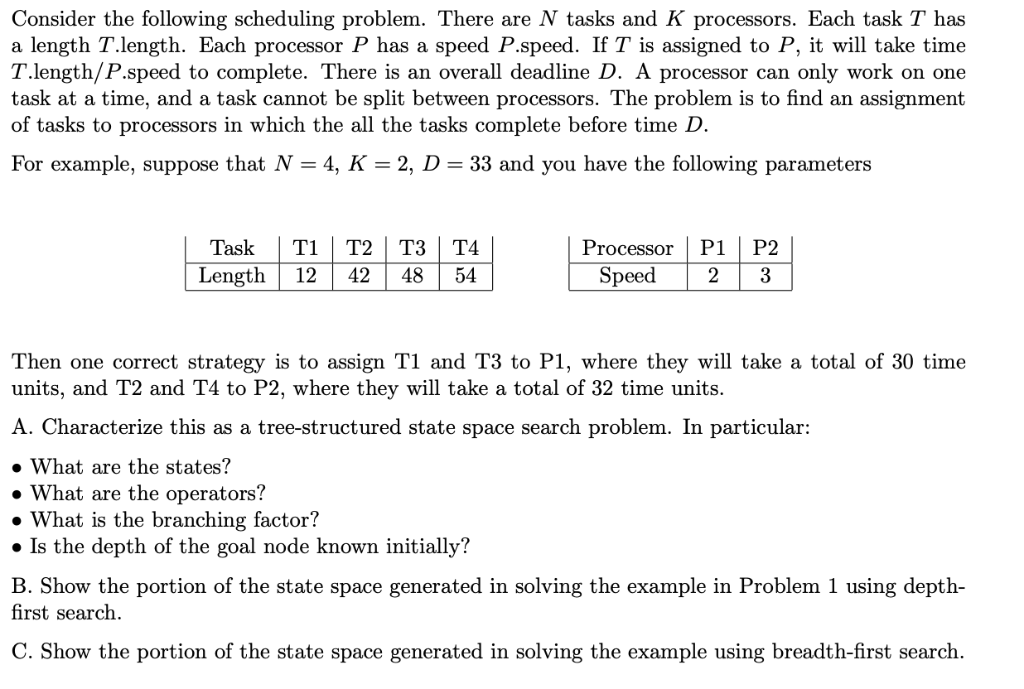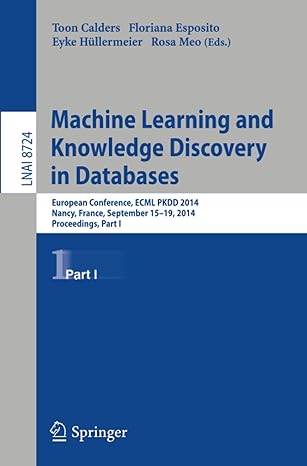
Consider the following scheduling problem. There are N tasks and K processors. Each task T has a length T.length. Each processor P has a speed P.speed. If T is assigned to P, it will take time .length/P.speed to complete. There is an overall deadline D. A processor can only work on one task at a time, and a task cannot be split between processors. The problem is to find an assignment of tasks to processors in which the all the tasks complete before time I For example, suppose that N-4, K-2, D 33 and you have the following Task T1 T2T3 |T4 Length 12 42 48 54 Processor | P1 P2 Speed23 Then one correct strategy is to assign T1 and T3 to P1, where they will take a total of 30 time units, and T2 and T4 to P2, where they will take a total of 32 time units. A. Characterize this as a tree-structured state space search problem. In particular: . What are the states? What are the operators? What is the branching factor? o Is the depth of the goal node known initially? B. Show the portion of the state space generated in solving the example in Problem 1 using depth- first search C. Show the portion of the state space generated in solving the example using breadth-first search. Consider the following scheduling problem. There are N tasks and K processors. Each task T has a length T.length. Each processor P has a speed P.speed. If T is assigned to P, it will take time .length/P.speed to complete. There is an overall deadline D. A processor can only work on one task at a time, and a task cannot be split between processors. The problem is to find an assignment of tasks to processors in which the all the tasks complete before time I For example, suppose that N-4, K-2, D 33 and you have the following Task T1 T2T3 |T4 Length 12 42 48 54 Processor | P1 P2 Speed23 Then one correct strategy is to assign T1 and T3 to P1, where they will take a total of 30 time units, and T2 and T4 to P2, where they will take a total of 32 time units. A. Characterize this as a tree-structured state space search problem. In particular: . What are the states? What are the operators? What is the branching factor? o Is the depth of the goal node known initially? B. Show the portion of the state space generated in solving the example in Problem 1 using depth- first search C. Show the portion of the state space generated in solving the example using breadth-first search







